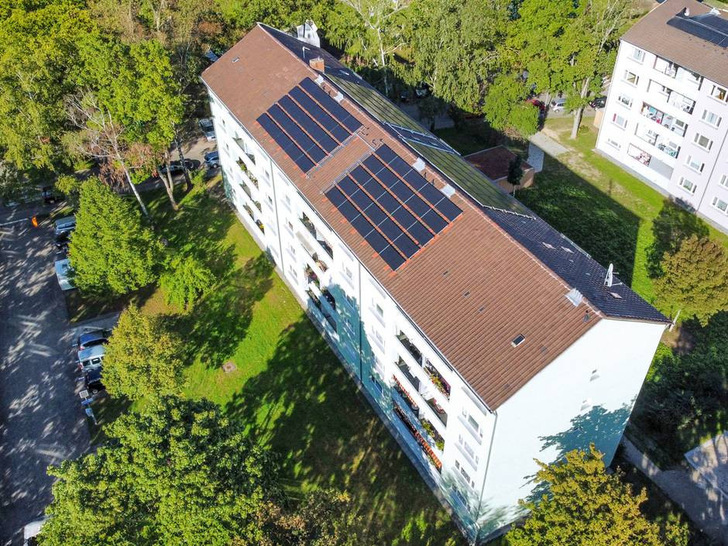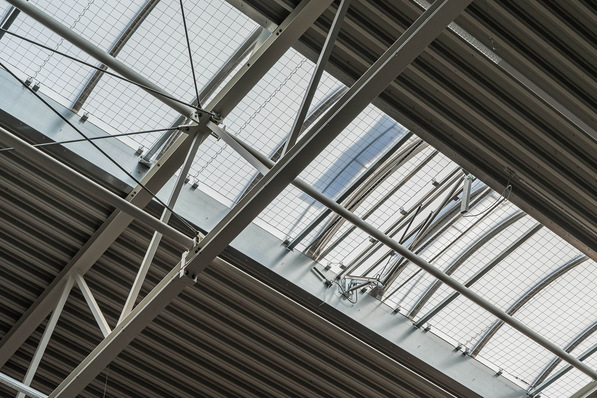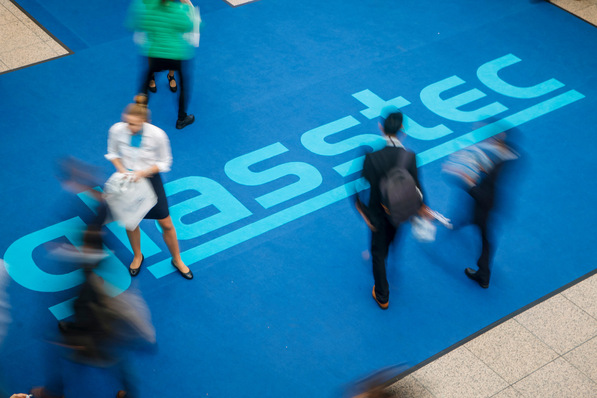If you own a single-family home, the decision to go solar is easy: call a contractor, get quotes, and have the system installed. In a homeowners' association, the process is a little more complicated because many people have to agree on the decision. There are four models to choose from for multi-family homes that want to use their roofs for their own power supply. Within these models, there are sometimes different variants. We present them all here.
The good news is that the German government’s Solar Package 1 has made this type of self-sufficient power supply easier for tenants and owners.
Model 1: Power supply within the building
There are three variants of this concept. What they all have in common is that both the general electricity and the electricity used privately come (proportionately) from the roof. Participation in the self-sufficient power supply is voluntary – for both tenants and owners.
Community building supply: This variant is the most unbureaucratic in this model and was introduced in 2024. It is so called because the solar power generated is supplied to the community in the building. This includes both the general electricity for the underground car park, etc., and the private consumption of the participating apartments.
However, as the PV electricity is usually not sufficient, each party concludes a separate contract with the electricity supplier of their choice. “This means that each residential unit needs a smart meter that distinguishes whether a kilowatt hour comes from the roof system or from the public grid,” explains Johannes Jung from the Regio Freiburg Energy Agency. He is the author of a guide on how multi-family homes can use PV electricity. The roof system can be operated by the homeowners' association itself or by a contracted service provider.
The advantage: All participants benefit from more cost-effective solar power, while at the same time eliminating the bureaucratic effort that was previously necessary.
Single meter model: This model for electricity supply within the house is also known as collective self-supply and works as follows: The electricity from the roof is consumed by all participants, and the remaining electricity is purchased. The special feature is that there is only one electricity meter that measures both the purchased electricity and the surplus solar power fed into the grid.
This means that there is only one basic fee and one annual electricity bill. With ten residential units, this saves nine times the network operator's basic fee every month," emphasizes Jung. How this amount is later settled among the members of the building community is up to them. This can be done, for example, via private meters in the individual residential units, accurate to the kilowatt hour. Alternatively, flat-rate billing based on square meters, residents, or co-ownership shares is also possible. “It is probably the simplest and most economical model and is particularly suitable for small to medium-sized homeowners' associations with close ties,” says Johannes Jung.
Advantage: Participants in this option only share a basic fee, as there is only one connection for the entire community. This makes electricity even more cost-effective, as everyone pays only their share of a basic fee instead of a full basic fee. Electricity consumption is measured via this connection. Billing is handled by the property management company or the homeowners' association itself. With a battery storage system, the homeowners' association can actually use even more of its own solar power.
Tenant electricity: Tenant electricity is probably the best known but also the most notorious option. With this option, a service provider leases the roof and installs a PV system. It sells this electricity together with purchased electricity to the participating residential units in the building. Billing is handled by the service provider, and neither tenants nor owners have to worry about finding their own electricity provider. Since the provider is also the electricity supplier, this involves a lot of bureaucracy, which the owners can hardly manage by themselves. “Large residential complexes that still want to use PV therefore usually leave this to a contractor,” says energy expert Jung.
Advantage: This means they only have one contact and billing partner and still benefit from their own green electricity. Disadvantage: This option is the most bureaucratic of the three due to the electricity provider status, and all participants are tied to the one contractor who sets the electricity price.
Model 2: General electricity supply with and without heat
If the self-generated electricity is used exclusively for general electricity, such as for corridor or underground car park lighting and the operation of the elevator system, this is referred to as the general electricity supply model. “Here, every owner benefits equally from the community photovoltaic system,” explains Johannes Jung, “but there are no plans to supply the individual residential units with PV electricity; they obtain this from the grid operator of their choice.”
The model is also available with heat supply if a communal heat pump is operated with solar power. Since not every household consumes the same amount of heat, heating costs are allocated separately via heat cost allocators. These work either via evaporators (until 2026) or electronically.
Advantages: The free provision of PV electricity for general electricity reduces the utility bills for everyone. In addition, each household is responsible for its own electricity supply, and the exclusive use of solar power for general electricity eliminates the need for individual consumption billing.
Model 3: Individual systems on roofs or balconies
With so-called roof rental, each owner or tenant can use a section of the roof to operate their own photovoltaic system with their own cabling and inverter.
“With individual roof systems, the costs are higher overall than for a communal PV system due to the complex installation and additional materials,” Jung calculates, “but there are no administration or billing costs for the homeowners' association or property management, because everyone takes care of their own system.”
The situation is similar with balcony systems: “Here, too, there are no billing costs, and such a plug-in solar kit does not cost much and is quick to install. Therefore, it usually pays for itself after five to six years at the latest, even without subsidies,” calculates Johannes Jung.
Model 4: Full feed-in to the grid
The fourth model for photovoltaics on multi-family homes is that the electricity from the communal system flows entirely into the public grid and the owners jointly receive a fixed payment for this. This amount can be used to increase reserves or is paid out annually to the each owner. The low feed-in tariffs make this option economically unattractive. However, this concept is well suited for owners that are committed to climate protection. The effort involved is also limited; the only thing that needs to be done is to allocate the income to the owners.
Full feed-in is also an option if the owners want a PV solution quickly but have not yet finally decided on a usage model, because feed-in is always possible – even as a temporary solution.
What is the best solution?
“There is no one model that is the best solution for all multi-family homes. Which concept is suitable in each individual case depends on many factors. These include, for example, the size of the community, whether it has a loose or close-knit structure, and how much you want to do yourself,” emphasizes Johannes Jung.
The Freiburg-based energy expert advises: “Seek advice.” The best people to talk to are local energy agencies or energy consultants.
3 answers from Johannes Jung
Who do you advise? Is this also possible outside Freiburg?
We work with small and medium-sized owners' associations, as the larger ones usually turn to a service provider straight away. We provide advice throughout Germany – despite our name. Interested parties can receive telephone advice, a quick check, a detailed assessment or completely individual advice, depending on their information requirements and planning status. To do this, we need information about the location and the building. We are also happy to visit the site for a fee or present the shortlisted models at the owners' meeting.
What criteria do you use to recommend a model?
The goals that the owners are pursuing with their own PV system are important. Is economic efficiency the top priority? A certain degree of energy self-sufficiency? Or climate protection? The work that an owners’ community or property management company wants to do itself, from obtaining quotes to billing for solar power, is also taken into account.
Do you also implement such projects?
No, our job is to give advice. We do pass on recommendations if we know that a company has successfully implemented PV on multi-family homes. In the German state of Baden-Württemberg, however, we are happy to refer people to the photovoltaic network, where they can search for tradespeople by postcode. In other German states, local energy agencies can also help.














